

![]()

![]()
Since 2009, CYPE has actively participated in Research, Development and Innovation (RDI) projects, funded by national and European bodies, in collaboration with other bodies and companies, or alone. At present, this Research, Development and Innovation work has resulted in the production of several RDI projects, which have already been completed or are under development.
- CircularBIM - Circular economy strategies linked to the construction sector
- BIMSpeed - Building information management for efficient energy renovation
- RenoZEB - Accelerator of construction solutions for zero energy buildings and neighbourhoods
- BIMserver.center – Open Collaborative Platform for Architecture, Engineering and Construction Projects
- BIM SavesEnergy - BIM planning methods to guarantee energy efficiency during the construction process
- 3DCONS - New construction processes using 3D printing
- BIMDATA - New construction collaborative platform based on predictive algorithms and Big Data analysis
- ACCEPT - Quality control assistant during energy efficient building execution processes
- CloudFlow - Fire safety improvement for buildings by simulating fire propagation in the cloud
- IFC+
Open BIM technology with cloud storage Construction software - HolistEEc - Integral, holistic and optimised support for the life cycle of energy efficient buildings
- Methodology for the dynamic analysis of buildings exposed to seismic action, incorporating the effect of non-structural elements and design of the software tool with BIM model.
- Design and development of models for the analysis and design of geothermal exchange and active glazing for sustainable buildings (Geoglass Energy).
- Development of a general calculation methodology to analyse D regions and its application to foundation pile cap analysis software.
- Dynamic Fire Simulation using “FDS”.
- BALI Singular Strategic Project (Building Acoustics for Living) “Acoustically Efficient and Healthy Systems and Buildings”.
- Numerical analysis of linear thermal bridges.

CircularBIM - Circular economy strategies linked to the construction sector
Educational platform focused on advanced strategies of reinstatement of building materials in the industrial value chain to promote the transition to the Circular Economy through the use of BIM learning technologies.
![]()

BIMSpeed - Building information management for efficient energy renovation
BIMSpeed aims to allow all the parties interested in the construction process to adopt BIM to reduce the execution time of renovation projects by at least 30% by providing: 1) a BIM platform in the cloud within everybody’s reach, 2) a set of interoperable BIM tools, and 3) standardized procedures for data acquisition, modelling, simulation, implementation and maintenance of renovation solutions.
 |
 |
This project has received funding from the European Union's Horizon 2020 research and innovation programme under grant agreement No 820553 |
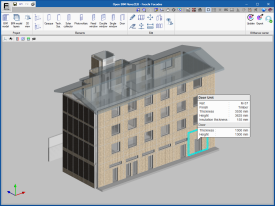
RenoZEB - Accelerator of construction solutions for zero energy buildings and neighbourhoods
RenoZEB aims to boost the renovation market for nearly zero-energy buildings (nZEB). This will be achieved by increasing the value of the property using a new systemic approach to rehabilitation that includes innovative components, processes and methodologies that help during the decision-making process to guide all the actors in the sector's value chain. Furthermore, RenoZEB will provide feasible “plug and play” solutions.
 |
 |
This project has received funding from the European Union's Horizon 2020 research and innovation programme under grant agreement No 768718 |

BIMserver.center – Open Collaborative Platform for Architecture, Engineering and Construction Projects
The aim of this project is to consolidate an open collaborative environment where all agents involved in the construction sector can interoperate and share information using an open standard. BIMserver.center platform will change the AEC software paradigm becoming the ‘construction social network’, a space where professionals can work in a common project using any AEC tool. Big Data approach create jobs promoting collaborations based on the needs of specific owners and projects.
The BIMserver.center project has received funding from the phase 1 of the SME Instrument 2018-2020 call of the European Union's Horizon 2020 research and innovation programme.
 |
 |
This project has received funding from the European Union's Horizon 2020 research and innovation programme under grant agreement No 835774 |
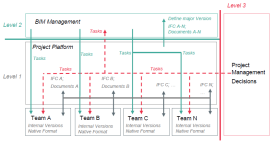
BIM SavesEnergy - BIM planning methods to guarantee energy efficiency during the construction process
In this project, planning methods are developed to assess the impact that the BIM can have when it comes to generating options for decision making on energy efficiency in the planning and construction phases. These planning methods are used to generate cooperation throughout the organization and ensure accurate information is provided to all parties involved. Compliance requirements are defined by validation rules for digital data and integrated into the management process.
![]()

3DCONS - New construction processes using 3D printing
This project is a compendium that covers the development of robotics, the search for new ranges of construction materials and the technological impulse of design and construction.
The planned new 3D printing systems will be used to rehabilitate envelopes using direct printing and by manufacturing prefabricated elements "on demand" (without the need for molds or formwork). These printing systems will work with new indoor and outdoor material ranges based on cement, lime, gypsum and mixed mixtures, specially developed to be applied by extrusion. For its part, CYPE collaborates in the development of BIM tools that overcome the current restrictions in the field of "multilayer" and "catalogue" construction, by proposing new construction systems in which the optimum shapes, dimensions and features are applied for each element and building area.
The CIEN 3DCONS project is co-financed by the Ministry of Economy and Competitiveness and the Center for Industrial Technological Development. It has a budget of €8M and will be carried out between 2015 and 2019.

![]()

BIMDATA - New construction collaborative platform based on predictive algorithms and Big Data analysis
This project is part of the software sector and its general aim is to develop Big Data functionalities for the BIMserver.center platform that enable the automatic search and prediction of the requirements before users themselves perceive them, and provide advice on the solutions to be implemented in the projects as well as offer services of other network professionals.

![]()
![]()

ACCEPT - Quality control assistant during energy efficient building execution processes
The goal of ACCEPT is to develop a set of 3 useful applications for the construction industry in order to help reduce the performance gap, improve overall quality and knowledge transfer on the project: one smart glasses application, another to use on tablets and a third desktop application for use on computers.
 |
 |
This project has received funding from the European Union's Horizon 2020 research and innovation programme under grant agreement No 636895 |
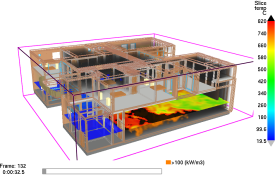
CloudFlow - Fire safety improvement for buildings by simulating fire propagation in the cloud
The aim of this project is to improve fire safety design in the construction sector using Computational Fluid Dynamics. More specifically, the project consists in integrating the CYPE-FDS tool in the CloudFlow platform to generate detailed fire simulation scenarios.
 |
 |
The CLOUDFLOW project has received funding from the European Community’s Seventh Framework Programme (FP7/2007-2013) under Grant Agreement No. NMP-ICT-FoF-2013- 609100 |

IFC+
Open BIM technology with cloud storage Construction software
This project is part of the construction software sector and its general objective has been to develop a new BIM product (Modelled with Information for Construction). This product increases the flexibility and collaboration of current and future CYPE solutions, as well as other third-party applications, thanks to the development of a new digital format (IFC+) and their respective read and write modules with cloud storage technology (Cloud).
A new hierarchical IFC+ format has been created in the project that contains the requirements of all the specialists in a single format, divided by levels of detail and sub-projects. With the new applications, each agent generates a local IFC+ file with its level of detail to synchronize and generate an IFC+ file assembled in the cloud.

![]()
![]()
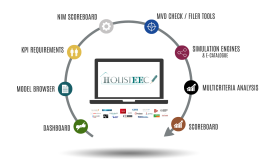
HolistEEc - Integral, holistic and optimised support for the life cycle of energy efficient buildings
The main objective of HolistEEc is to design, develop and test an online collaborative platform for the construction sector. The platform, based on BIM and the cloud, offers support for the advanced design and optimization of construction processes. The platform pays special attention to the awareness and use that end users can make of it.
 |
 |
The HOLISTEEC project has received funding from the European Community’s Seventh Framework Programme (FP7/2007-2013) under Grant Agreement No. NMP-ENV-EeB-2013-5- 609138 |
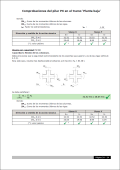
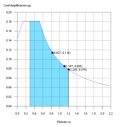
Methodology for the dynamic analysis of buildings exposed to seismic action, incorporating the effect of non-structural elements and design of the software tool with BIM model
This RDI project is currently under development. Its aim consists in the development of a dynamic analysis method for buildings exposed to seismic action, which includes the effect of the construction elements used in the walls and partitions of the building, and their implementation in a software design and analysis tool that satisfies the productivity and safety criteria required for the structural project of the building. Therefore, the computation period will remain within an admissible range for its use by architects and engineers.
This project is currently being developed by CYPE, with the collaboration of the 'Centro de Métodos Numéricos en Ingeniería' (CIMNE) of the 'Universidad Politécnica de Cataluña'(UPC), financed by the 'Centro para el Desarollo Tecnológico Industrial' (CDTI) and co-financed by the European Regional Development Fund (ERDF).
The tool will include:
- The possibility of considering different seismic standards, national and international, with the corresponding choice of parameters for generating the seismic design spectrum to be applied.
- Automatic generation of the dynamic model of the structure, including the effect of non-structural elements (walls and partitions) and the possibility of considering various behaviour models for the building corresponding to different situations or states of the walls and partitions.
- Modal spectral analysis of the generated models: static and dynamic condensation, calculation of modes and natural vibration frequencies (eigenvectors and eigenvalues), modal expansion and obtaining of participation coefficients for the different analysis directions.
- Generation of complete justification reports of the calculation method used, verifying that all the international and national seismic code criteria are met.
- A data entry interface allowing data import from the BIM model to the analysis tool.
- Consideration of the different reinforcement requirements and arrangements for the structural elements, depending on the ductility criteria assigned to them, such as the reinforcement of critical areas.
- Incorporation of capacity design in the seismic analysis, a requirement which is contemplated in most design standards. The program will carry out previous checks in columns, beams, and nodal zones to ensure plastification will occur at a point in the structure corresponding to global ductile failure mechanisms.
- Check of the minimum seismic shear at the base of the structure, to control that the maximum dynamic base shear (combination of the modal shears) is greater than or equal to a certain percentage, specified by the code, of the corresponding static base shear.
- Implementation of calculation method for the forces corresponding to the modal combinations.
There are currently no software tools on the market for the structural analysis of buildings which integrate the possibility to consider, in a simple manner, the walls and partitions, even though it has been shown they have a direct impact on the stability, rigidity and safety of the building during an earthquake. Given that the software tool of this RDI project will integrate them, keeping its computation period within a reasonable time, its use in building projects will increase their quality and the safety of their occupants, avoiding both material and human loss after an earthquake.
![]()
![]()
![]()

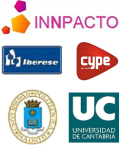 Design and development of models for the analysis and design of geothermal exchange and active glazing for sustainable buildings (Geoglass Energy)
Design and development of models for the analysis and design of geothermal exchange and active glazing for sustainable buildings (Geoglass Energy)
This RDI project is currently under development. Its final aim consists in aiding architects and engineers to incorporate geothermal exchange technology and non-stationary and passive models of active glazing in their projects, with more confidence.
To do this, procedures will be designed, developed and validated experimentally in this RDI project, so to obtain a tool that is capable of designing and elaborating parametric studies of geothermal systems and active glazing in a simple and effective way, and within a reasonable period of time; bearing in mind it must all be in accordance with the code in force.

![]()

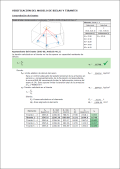
Development of a general calculation methodology to analyse D regions and its application to foundation pile cap analysis software
Strut3D is a software tool resulting from the RDI project developed by CYPE with the collaboration of the 'Instituto de Ciencia y Tecnología del Hormigón' (ICITECH) of the 'Universidad Politécnica de Valencia' (UPV), financed by the 'Centro para el Desarrollo Tecnológico Industrial (CDTI) and co-financed by the European Regional Development Fund (ERDF).
Strut3D checks (in CYPECAD, CYPE 3D and Foundation elements) foundation pile caps using a general calculation method in which the D regions of the reinforced concrete are analysed using a strut and tie model, in order to guarantee the structural requirements are met in accordance with the standards. The strut and tie model used has been previously validated by a linear finite element analysis.
Additionally, Strut3D provides a graphical output of the results, allowing users to consult them on screen and in the detailed verification reports, which indicate whether or not they comply with the standards. The information provided is of great importance, as it is this information which will be used by the project designer when deciding on and justifying the design.
This RDI project is foreseen for international use. Strut3D currently only considers the Spanish EHE-08 concrete design code. More concrete design codes, including the Eurocodes, will be implemented in upcoming program updates.

![]()

 Dynamic Fire Simulation using “FDS”
Dynamic Fire Simulation using “FDS”
In this project, CYPE has developed the “Dynamic fire simulation” program, which carries out dynamic simulations of the evolution of fire in buildings using the FDS (Fire Dynamics Simulator) analysis motor and the graphics viewer Smokeview (SMV).
![]()

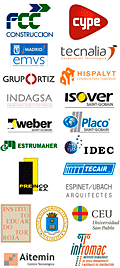 BALI Singular Strategic Project Building Acoustics for Living) “Acoustically Efficient and Healthy Systems and Buildings”
BALI Singular Strategic Project Building Acoustics for Living) “Acoustically Efficient and Healthy Systems and Buildings”
The BALI SSP is a project developed by a multidisciplinary consortium of industrial companies and research centres. By participating, CYPE has provided its acoustic calculation software for buildings to develop a software tool that is capable of integrating innovative construction and acoustically efficient solutions resulting from the BALI SSP investigation, making them accessible to the designer and adequately characterising them for proper use and analysis in the building services program of the building.

![]()
 Numerical analysis of linear thermal bridges
Numerical analysis of linear thermal bridges
CYPE, in collaboration with the “Universidad de Miguel Hernández” in Elche (Alicante), for this project, has developed a software tool that integrates the numerical analysis of thermal bridges in the energy demand calculation of buildings.

![]()

Tel. USA (+1) 202 569 8902 // UK (+44) 20 3608 1448 // Spain (+34) 965 922 550 - Fax (+34) 965 124 950
